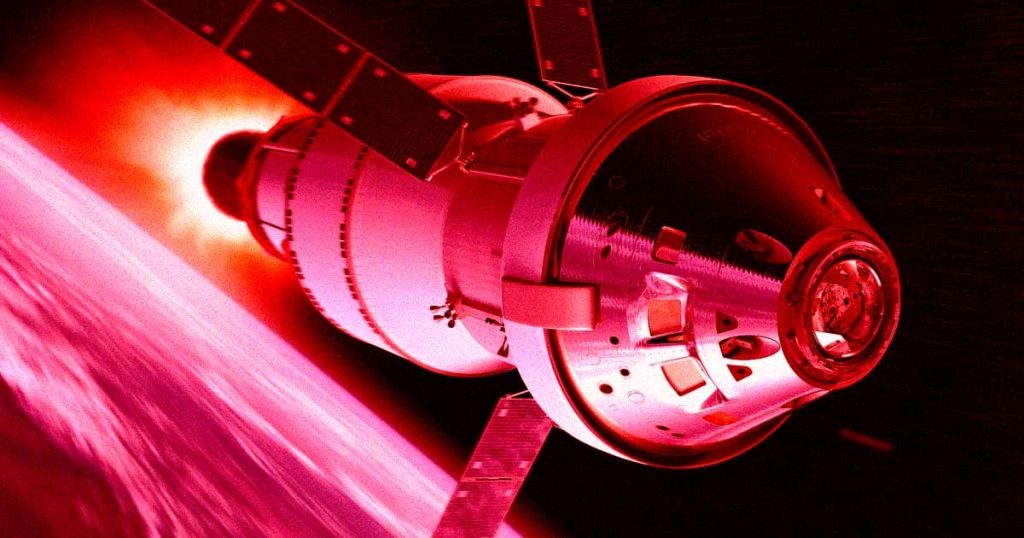
NASA Keeping Issue With Moon Rocket a Secret (Image Credit: futurism-com)
In late 2022, NASA launched its uncrewed Orion spacecraft around the Moon and back to Earth as part of its Artemis I mission, setting the stage for the first human lunar landing in over half a century several years from now.
But Orion’s fiery reentry through the Earth’s atmosphere left behind plenty of scars — and several glaring questions unanswered. Orion’s heat shield started disintegrating, with subsequent reviews finding it had cracked and chipped.
While the space agency now says it’s identified the issue, as Ars Technica reports, officials are being strangely secretive about what exactly went wrong.
“We have gotten to a root cause,” assistant deputy associate administrator for NASA’s Moon to Mars program office Lakiesha Hawkins told Ars during an event on Monday.
“We are having conversations within the agency to make sure that we have a good understanding of not only what’s going on with the heat shield, but also next steps and how that actually applies to the course that we take for Artemis II,” she said, referring to the first crewed trip to the Moon, which is slated to launch in just under a year from now.
“And we’ll be in a position to be able to share where we are with that hopefully before the end of the year,” she added.
The stakes may be high — NASA has gone all-in on its efforts to return to the Moon — but the timing couldn’t be worse. With the presidential election around the corner, the agency is likely choosing to lay low before it discusses its plans for Artemis II.
Unlike Orion’s inaugural uncrewed trip in 2022, this mission will involve a crew of four astronauts, taking them to and around the far side of the Moon. That means NASA needs to know exactly what caused the spacecraft’s heat shield to crack, even if Orion made it back to the Earth’s surface in one piece.
Earlier this year, NASA’s Office of Inspector General found in a report that the capsule took a beating, with engineers finding extensive cracks across more than 100 locations.
“The Artemis I test flight revealed critical issues that need to be addressed before placing crew on the Artemis II mission,” the office concluded at the time.
But even though NASA officials now claim that they’ve figured out why, with engineers successfully reproduced the damage inside a facility at NASA’s Ames Research Center, they remain tight-lipped about the specifics.
“What we are doing now is assessing what is the appropriate approach for Artemis II, regarding the heat shield,” acting deputy associate administrator for NASA’s Exploration Systems Development Mission Directorate Lori Glaze told reporters during Monday’s event, as quoted by Ars.
“I know we all want more information faster, sooner, better,” she admitted. “We’re moving it as quickly as it possibly can move, and there will be decisions forthcoming.”
In other words, we’ll have to remain patient until NASA’s ready to talk. And Glaze remained vague about when that will be.
“When it comes out, it’ll all come out together,” she said.
Given the fact that NASA has already mated its Orion crew module with its service module, the agency appears to be confident in its supposed fix. Making any changes at this point would require substantial disassembly, according to Ars.
In short, NASA’s Artemis II mission is tentatively scheduled for a mere eleven months away — and there’s a good chance we could be looking at delays. For one, NASA is waiting for the final word on the heat shield until it begins stacking its massive Space Launch System Moon rocket.
Where that leaves the first planned human landing, Artemis III, which is slated for late 2026, is anything but clear at this point.
More on the heat shield: NASA Inspector Alarmed by Extensive Damage to Heatshield of Astronaut Moon Vehicle
Share This Article





